
I love to boondock! While I do stay in RV parks and campgrounds at times, my favorite place to park is out in the boonies. There’s nothing like watching deer graze in the woods next to your parking spot or listening to the soothing sound of flowing water. If you like peace and quiet, natural surroundings, and sunsets from the top of a mountain, you just might be a boondocker, too! And the best part? Boondocking is almost always free!
Boondocking is camping in remote areas, away from developed campsites or RV parks. It’s similar to dry-camping, in that you won’t have any hookups (electric, water, or sewer), but it’s more “off-the-beaten-path.” Compare a night in the forest with a night at Walmart. Big difference, right? And, unlike urban dry-camping, which should be limited to brief overnight stops, many boondocking spots allow you to stay for weeks instead of hours.
I spend a lot of time on public lands. Many folks don’t know that the American public owns all Federal public lands, including Bureau of Land Management (BLM) lands, national parks, national forests, wilderness areas, wild and scenic rivers, and wildlife preserves. All Americans have the right to experience and enjoy these places, and every American has a personal stake in how these places are cared for. There are many millions of acres of BLM lands open and available for your use, and most national parks and national forest lands offer “dispersed” camping outside of their developed campgrounds. Let me give you a personal example: I spent the summer of 2018 enjoying some great boondocking spots in the Carson National Forest in northern New Mexico.

The Carson is 1.5 million acres of land, and I could set up camp anywhere within 300 ft. of any park road. Anywhere! I could stay up to 14 days in any one spot, but I tended to move around a lot, because I couldn’t wait to see what the next spot would be like. Most places I stayed were between 8,000 ft. – 10,000 ft. elevation, and the days were pleasantly warm and the nights cool and crisp. There were many small towns where I could shop for essentials, a meal or a beer, and I even had cell coverage in most of the places I stayed. When I needed water and a dump station, I could utilize a developed campground for one night, but in many cases, I was able to find free dump stations and water fills nearby. I found many “established” boondocking spots using internet resources like Campendium.com and freecampsites.net. These spots are ones that folks have camped in over the years, and although most were pristine and beautiful, some showed serious signs of abuse. Which brings me to the reason I’m speaking to you: we, as RVers, need to understand the impacts of our presence and work together to keep these wonderful camping spots from being damaged by thoughtless use.
Escapees has always worked to protect alternative camping options. Our Good Neighbor policy has advocated sensible use of urban dry-camping spots for more than 20 years and has been endorsed by many other RV organizations. It’s time we turned our attention towards public lands and the travelers who use them. While promoting boondocking will help make RVers aware of the many great back-country camping opportunities out there, increased use of such locations can have negative effects. Overuse can hurt local ecosystems that take years to recover, and abuse can create tighter regulations, raise maintenance fees, and have an overall negative impact on public lands and our ability to use them in the spirit in which they were intended. In extreme cases, it can lead to closures of boondocking sites.
To protect this privilege for future generations of RVers, it’s essential that we all take a part in being good stewards of our environment and public lands. With the help and support of our advocates, the Escapees RV Club has created a condensed “RVers Boondocking Policy” of best practices and etiquette to help RVers be good neighbors to each other and the land. Following these guidelines will help ensure that our public lands will remain beautiful treasures that we can retreat to as we travel.
Download The RVers Boondocking Policy Here:
The RVers Boondocking Policy provides the guidelines in a concise form, but there’s more to it than that. Let’s talk about the five guidelines in more detail:
Respect The Rules Of The Land
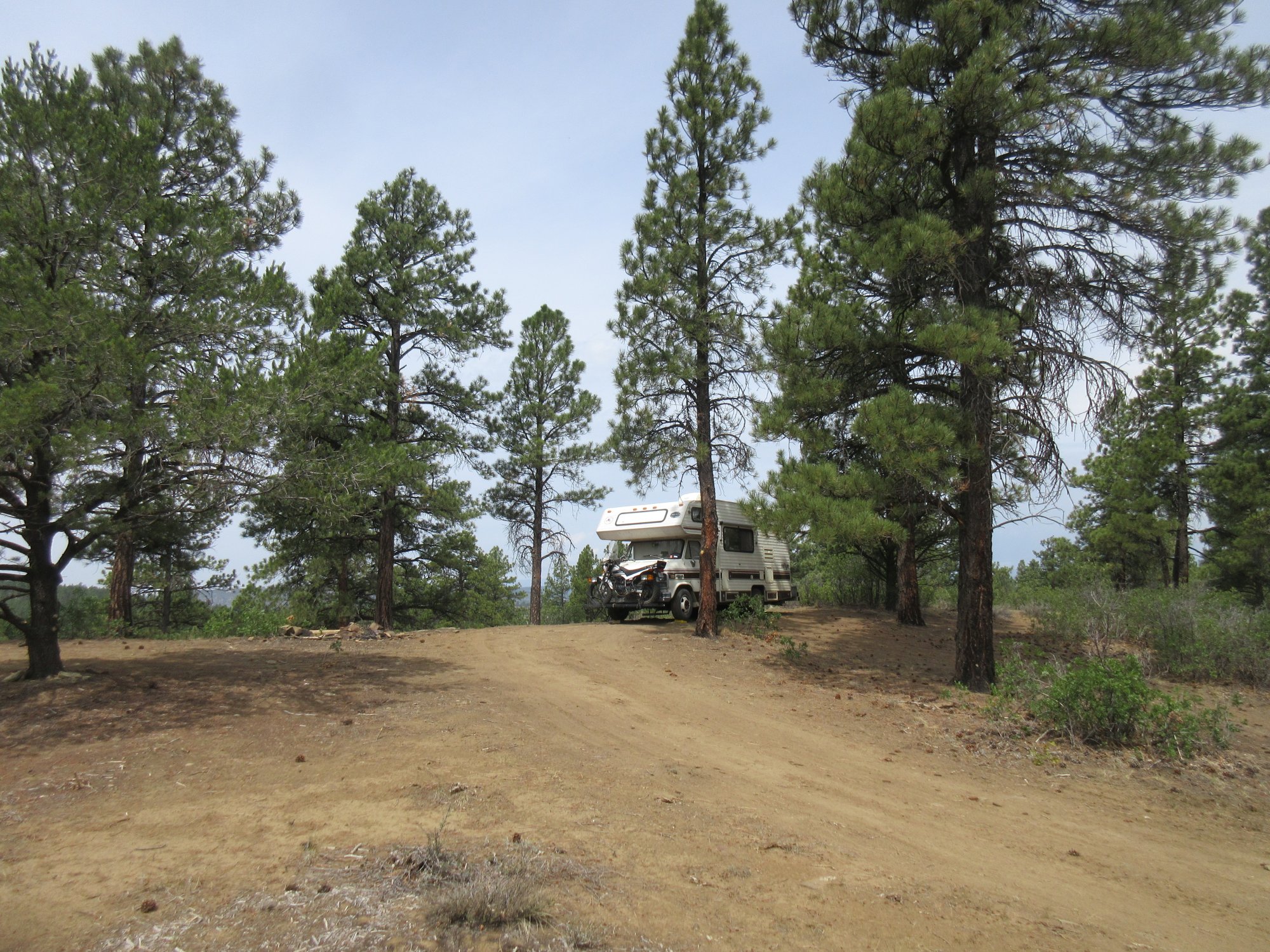
Most public lands have usage rules, and they vary a lot. While you can look for posted signs at the site or do some research online, I think that the best way to learn the rules is to visit a local ranger station or public lands office. Many will have maps available (free or at a small cost) that define where you can camp and identify roads by number or name. These agencies patrol these areas, so they can alert you to any closures or issues with access. Be sure to ask about road conditions! Some roads are fine for even large vehicles, but some are high-clearance/4-wheel drive only, and the folks assigned to patrol these areas will know which is which.
Permits
Some lands require use permits. They are usually free or inexpensive, but to avoid hassles (and possibly a fine), you need to check with the local rangers or BLM land office or other local agency and obtain permits when you’re required to. Most state trust lands require a permit, and some of the more popular BLM lands, like the long-term visitor areas near Quartzsite, AZ, also require them.
Use Limits
In my experience, all public lands have limits on how long you can stay. These limits are intended to prevent folks from homesteading permanently on public lands, so most traveling visitors should have no problem abiding by them. The limits vary a lot from place to place. I find that most national parks and forests limit stays to 14 days in one spot. If you move to a new spot in a different area of the park, that usually resets the clock for another 14 days. BLM land seems to generally have either a 14-day or a 21-day limit, but there are lots of exceptions. Some agencies require you to spend a certain amount of time outside the boundaries of the land they oversee. The following is quoted from the BLM.gov website and addresses dispersed camping on BLM lands.
Dispersed camping is allowed on public land for a period not to exceed 14 days within a 28 consecutive day period. The 28-day period begins when a camper initially occupies a specific location on public lands. The 14-day limit may be reached either through a number of separate visits or through 14 days of continuous overnight occupation during the 28-day period. After the 14th day of occupation, the camper must move outside of a 25-mile radius of the previous location until the 29th day since the initial occupation.
The take-away here is to find out what the stay limits are in your desired area and abide by them. Remember, the primary reason for limits is to prevent people from setting up a permanent residence on public lands. If you aren’t trying to do so, generally, you won’t have problems.
Camp Only In Designated Areas
Some dispersed camping areas will have actual site designators. In these areas, stick to the established campsites. In areas without designated sites, it’s a good idea to utilize areas that are already being used for camping. Sometimes there will be a fire ring or an obvious parking spot between the trees. Avoid creating a new camping area for your stay. Remember, we should tread lightly whenever we can.
Federal Lands = Federal Law
Federal Lands = Federal Laws. Remember that many of these lands fall under Federal law. Even though something is legal in the state you are staying, it may not be legal under Federal law. Always obey any posted restrictions, such as firearm and fireworks restrictions, and just be aware that the Feds are in charge here.
Treasure The Terrain
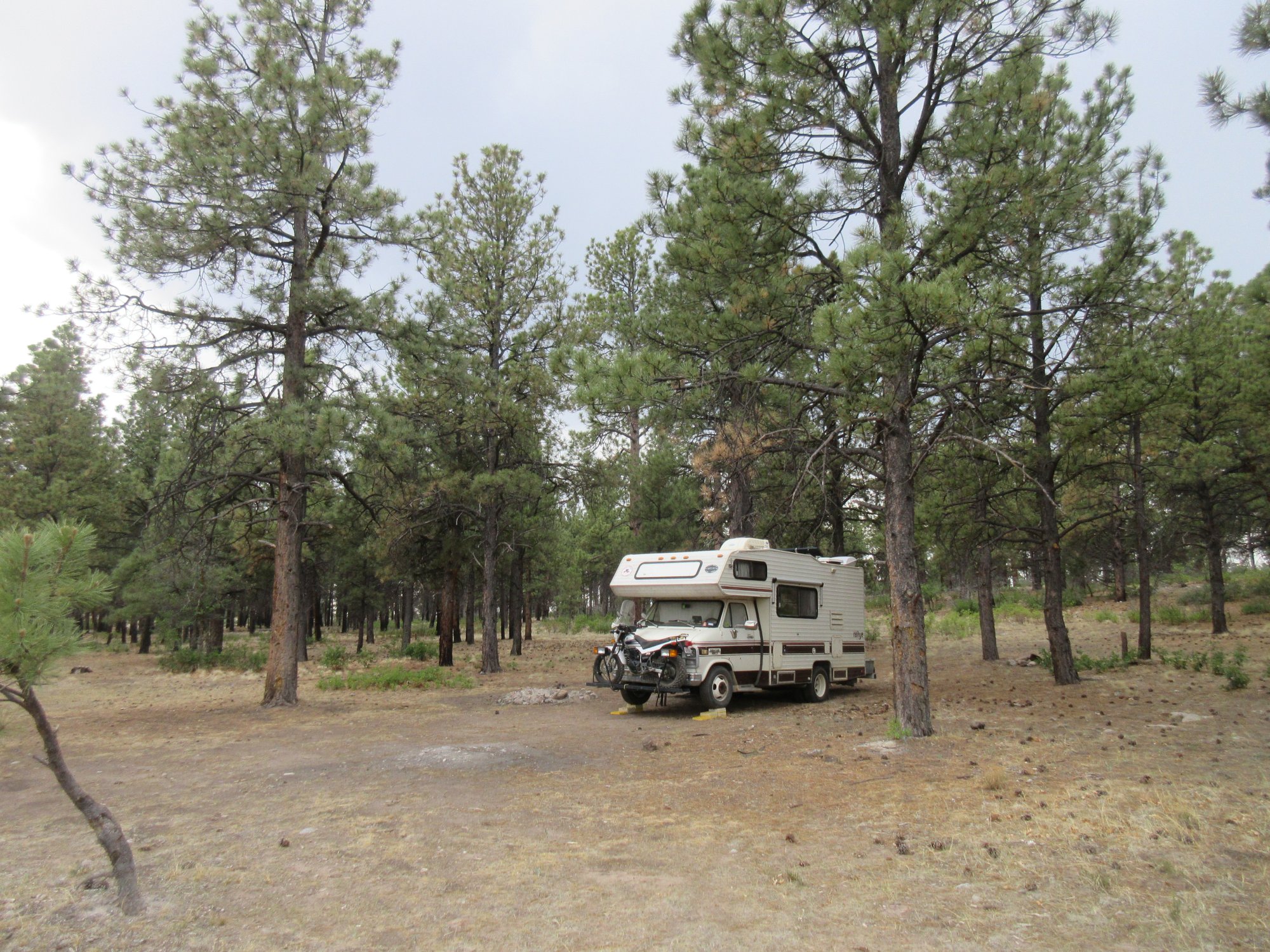
Let's Keep Our Impact To A Minimum
Avoid damaging surfaces or modifying terrain by digging, moving large rocks, or cutting plants. Always stick to pre-existing paths and roads without widening them or creating new ones. Remember, there are native plants, organisms, and ecosystems that interplay here.
Camp Only On Durable Surfaces
Before you choose where to park, pay close attention to what the ground is telling you. Never park on soft sand or boggy soil. The nearest tow truck is probably many miles away, so let’s not get stuck! Pay attention to the contours of the land and always try to pick higher ground so that, if it rains, you won’t be an island in a lake. Make sure that the road you took to get here will still be passible if the weather changes. Gravel and rock can withstand human tread better than exposed soil. Out West, you will occasionally find ground that looks sturdy but is not. It’s damaging to “bust the crust” as it is cryptobiotic soil. Always walk the area you are planning to park in. We’re looking for any debris, the remains of old campfires (which often contain glass and nails) and deep tire tracks (which may be a clue that the surface isn’t as hard as it looks).
Take Only Pictures And Memories
Take only pictures and memories. Don’t collect items in the area to take with you. In most national parks and forests, it’s illegal to remove anything (except trash) from the land! Follow the rules that apply to collecting firewood. If you’re not sure of the rules, don’t gather any wood.
Respect Your Neighbors
Avoid overcrowding an area or blocking your neighbors’ view. Many of the folks who like to boondock enjoy their peace and quiet. Whenever possible, park out of sight of any neighbors. You can always walk by later and say hello, and I always do, just so that they know I’m there and I’m friendly. If there’s nowhere to park except right next to someone, consider the area full, and look for a different spot. Always drive at a campground speed and be aware of kids, wildlife, pets, and your dust trails.
Generators
Always try to orient your RV so that your generator exhaust isn’t directed at others. And please, respect quiet hours for generator use. Each area will have different regulations, but quiet hours are generally considered to be between 10pm and 8am. The sound of a generator will carry a long way on a quiet night, so plan your needs for electricity during daylight hours and keep generator use to a comfortable minimum.
Maintain a Tidy Campsite
We are there to camp for a limited time, not set up a permanent residence. Keep camping and cooking gear that you aren’t using stowed. Keep all trash stowed so that animals can’t get to it. Keep noise to a minimum so everyone has a peaceful experience. As noted, many people are boondocking just for that reason. I always consider generator hours to be quiet hours for all forms of noise
Respect Nature and Wildlife
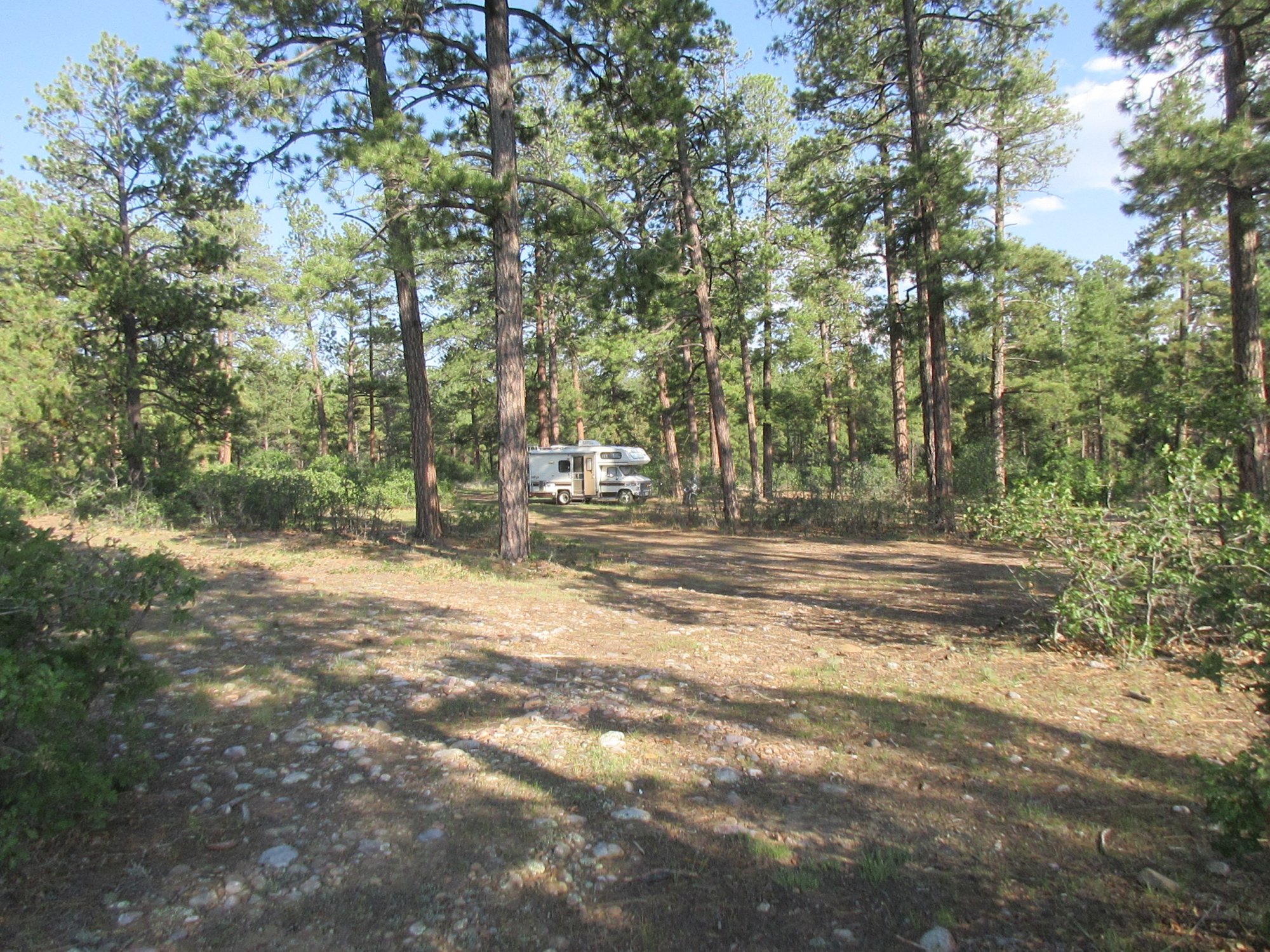
Clean Up After Your Pets
Keep pets under control and clean up after them, even in the wild. Pet feces, besides being a shoe hazard and a nuisance for people, may also contain diseases that can injure wildlife. Your pets should remain at your campsite unless you are walking together. You wouldn’t let them wander to a neighbor’s area in a campground, so please don’t do it while boondocking. Not everyone loves your pet as much as you. Also, the presence of pets, especially if they are free-ranging, can cause fun-to-watch wildlife to avoid the area because your pet smells like a predator to them. Local wild predators can harm pets, and smaller pets are often viewed as tasty treats by them, so it’s always safer to have pets on a leash when they are outside the RV.
Don't Feed or Approach Wildlife
Don’t entice, feed, or approach wildlife. Keep them wild for their own safety, so they don’t approach future campers and their pets. Most wild animals that become accustomed to humans wind up being destroyed because they have lost their fear of people, and that’s a dangerous situation. Yes, that’s a really cute chipmunk, but resist the temptation to share your snack. Always stow all food and garbage where critters can’t get to it. This is especially important in bear country!
Keep in mind that this applies to winged wildlife, too! Many RVers enjoy placing bird feeders around their campsites to entice these gorgeous creatures to come for a visit. Unfortunately, when you pack up and move on to the next destination, birds who have grown accustomed to your buffet continue coming back only to find that their food source has disappeared. This change in routine and sudden drop in resources can be detrimental to wildlife. If bird-watching is a favorite hobby, consider visiting designated wildlife viewing areas. These are designed to work with the existing ecosystem to provide visitors an enjoyable experience while respecting the habitat and needs of local wildlife.
Limit or Eliminate Use of Pesticides
We’re used to grabbing the can of insecticide when we see a marauding ant or spider, but out here, those bugs are somebody’s dinner, so use pesticides only when necessary and limit their use to yourself and your RV. Pesticides disrupt the local ecosystem and can be poisonous for wildlife. There are environmentally friendly alternatives if needed. Remember that we are visitors in their home.
Wood and Fires
There’s nothing better than sitting around a campfire, but check for any local burn bans before you light up. Be respectful of any rules for collection of firewood where you’re camped, and please do not transport firewood! This can spread pests and diseases. Always obtain firewood locally, and don’t take it with you when you leave. Instead, leave any leftover wood by the fire ring for the next visitors. Remember Smokey the Bear, and make sure your fire is fully extinguished before you leave it. Consider a propane firepit that you can carry with you and snub out easily. An added benefit of a propane fire is that you can use them just about anywhere, and most are considered acceptable for use even in areas with active burn bans. Since we’re talking about fires, did you know that exhaust pipes on vehicles and generators can trigger fires? Always pay attention to where your exhaust is pointed.
Pack It In, Pack It Out
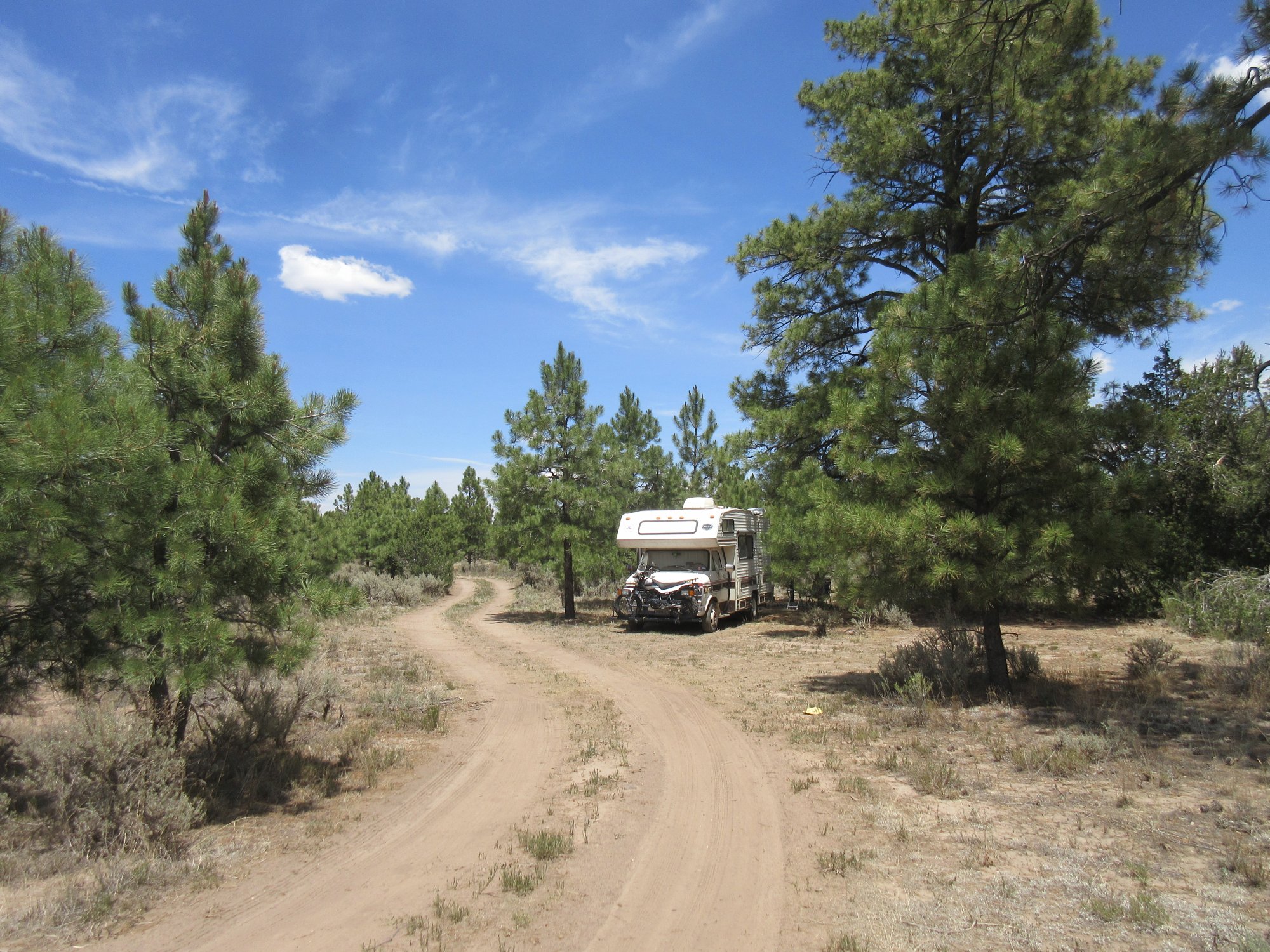
Keep Your Holding Tanks Closed
Please keep your holding tanks closed! Learn to conserve water, and when your holding tanks are full, it’s time to go. There are rarely any dump stations at boondock spots, but there may be one closer than you think. A developed campground with a dump station may be nearby, or scope out the area with rvdumpsites.net or rvdumps.com. Campendium also lists dump sites.
Finding Fresh Water
Always acquire potable water from safe sources, and ask before obtaining water from a private source. You’d be surprised how many gas stations and visitors centers have easily accessible water faucets, and all you need do is ask. Many dump stations offer potable water; it will be clearly labelled as such. Many rustic campgrounds have water faucets located in several spots along interior roads. I’ve never had much trouble finding potable water.
Disposing of Trash
Dispose of trash respectfully in public trash receptacles. Smaller bags can help make this easier. Whenever I stop at a rest area or fill up at a gas station, I always off my trash. You can lower your impact with biodegradable products. I always choose paper over Styrofoam, and I sort out all my recyclables, like water bottles and aluminum cans, and bag them separately because these non-stinky trash items can be stowed almost anywhere. This conserves your stowage place for stinky garbage, hopefully, in a compartment that’s outside and out of nose reach.
Always Leave The Area Cleaner Than You Found It
We encourage everyone to chip in and keep our public lands clean. Avoid discarding cigarette and cigar butts and other trash into fire rings or pits, and don’t toss them on the ground either. Pick up any trash you find around your site, even if it’s not yours. Take a walk with a trash bag and pick up as you go. I always collect and pack out any trash I find, provided it’s small enough for me to carry it. I have occasionally found abandoned trash that was too large to move, but, thankfully, it’s rare.
Conclusion
If you haven’t tried boondocking yet, put it on your To Do list! Concerned about your ability to go off-grid? Just spend a weekend at a campground with full hookups, but don’t hook up to them. When you arrive, fill your fresh-water tank, drain your holding tanks, and stow your hoses. Leave the power cord disconnected and spend the next few days learning how your RV operates without any hookups. If you run out of water, or need a battery charge, you can easily hook back up. Once you know what your RV can do on its own, you can start planning your first boondock outing!
I hope you’ll join me out in the boonies! By following these guidelines, we will know that we are doing our part to help protect and preserve our public lands and the camping privileges for us and future generations.
We must be good neighbors to each other and the land. If you feel that someone is unaware of these guidelines, share the Boondocking Policy letter with them in a friendly and positive way. These guidelines are not meant to shame anyone. Someone may be unaware or new to boondocking and might just need a little guidance.
Download The RVers Boondocking Policy Here:
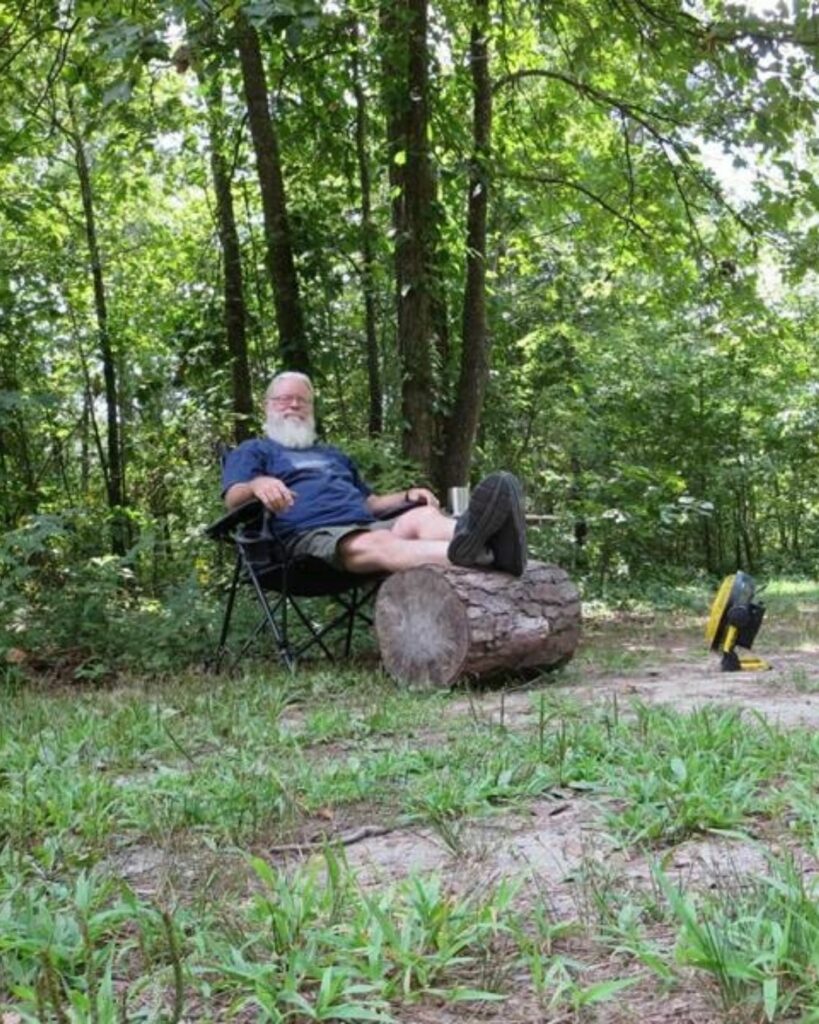
Author
Mark Nemeth
Did you like this post? Pin it to Pinterest!




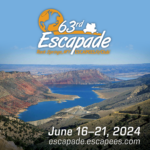

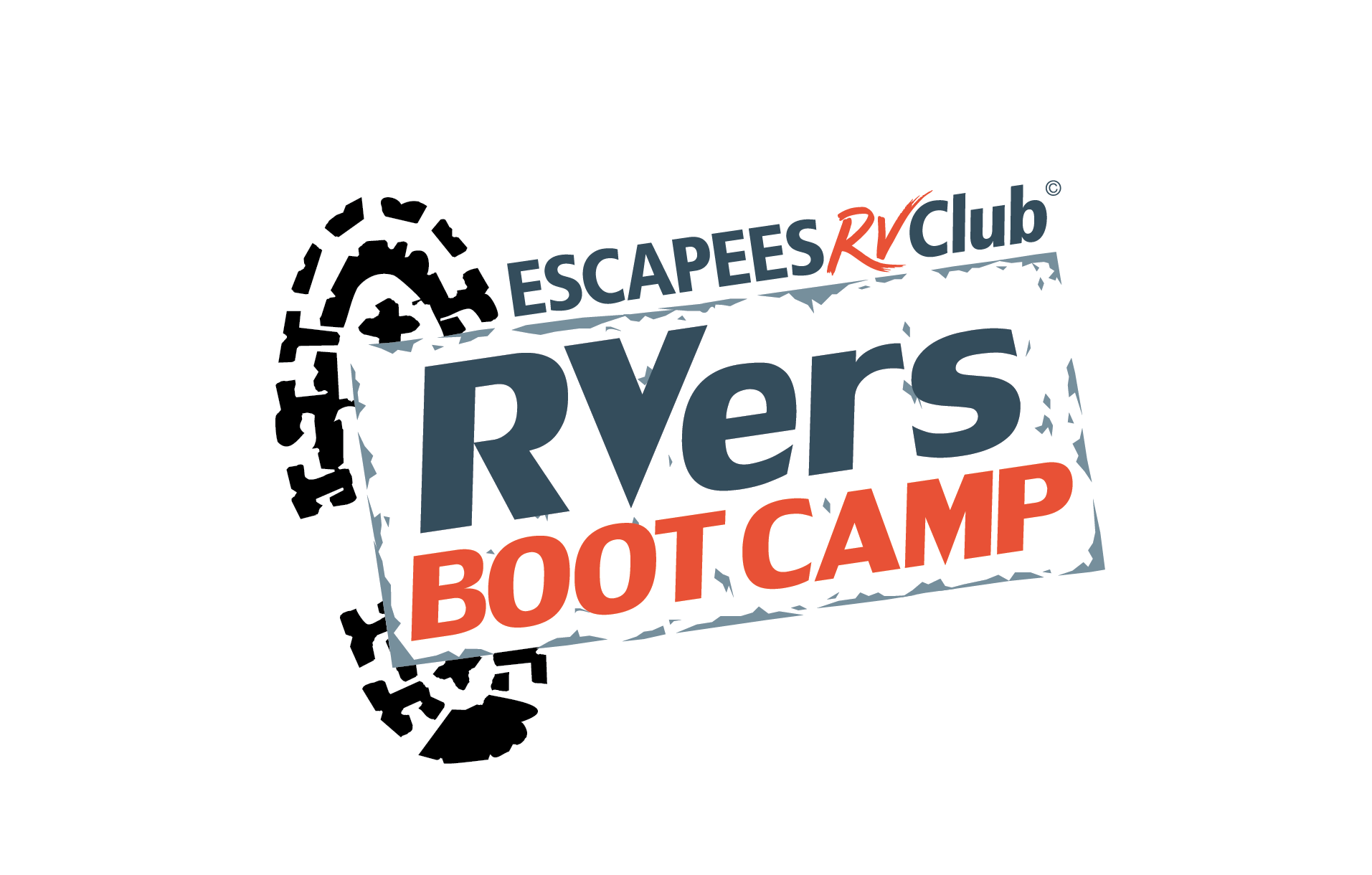

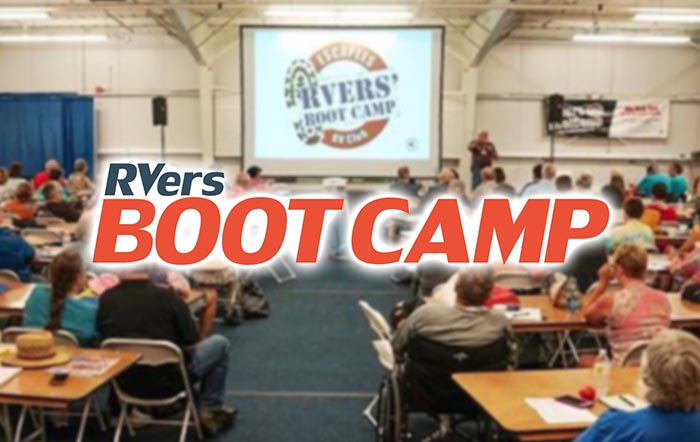
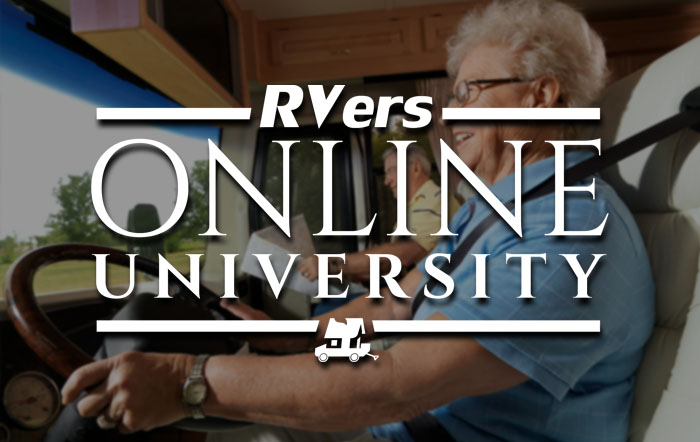

3 Responses
We love ATVing in the desert. However the more people that ride the more garbage we are finding. Whether it’s intentional or accidental please pay attention to how you secure garbage. And if it’s intentional shame you you!
This is valuable information and now I am asking the stupid newbie question: how do you find these great boondocking locations? Is there a site? For instance, I’m currently in Ohio having some work done on my rig and would love to find a spot as mentioned in the Akron area.
i have the typical apps – RV Life and all but I don’t see this type of camping mentioned.
Thanks in advance.
Regards,
Steve
This post on our sister site, Xscapers.com, should help with that! https://xscapers.com/finding-great-boondocking-spots/